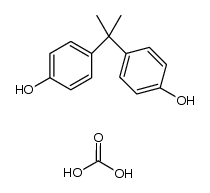[New materials for intraocular lenses].
K W Jacobi, M R Nowak
Index: Fortschr. Ophthalmol. 86(3) , 203-5, (1989)
Full Text: HTML
Abstract
The first intraocular lens implanted in a human eye 39 years then lenses ago, was made of polymethylmethacrylate (PMMA). Today this material is considered to be the standard, so every new type of material is compared to PMMA and must fulfil the requirements demanded of an intraocular implant today. Therefore, every attempt is made to use PMMA as the main structure while eliminating the disadvantageous characteristics even though they are minimal. Thus, the hydrophobic surface can be made more biocompatible by heparin-surface modification. In recent years, hydroxyethylmethacrylate (HEMA) and silicone have achieved a certain level of clinical importance. Another of the new materials is polycarbonate, which is still in the preclinical phase.
Related Compounds
| Structure | Name/CAS No. | Molecular Formula | Articles |
|---|---|---|---|
 |
Bisphenol-A-polycarbonate
CAS:25037-45-0 |
(C15H16O2.CH2O3)x |
|
Release of bisphenol A from polycarbonate: a review.
2013-01-01 [Crit. Rev. Food Sci. Nutr 53(4) , 386-402, (2013)] |
|
Tubular or subsurface morphology of octabutoxyphthalocyanine...
2011-05-23 [Chemistry 17(22) , 6098-108, (2011)] |
|
Experimental myringoplasty.
1980-11-01 [Int. J. Artif. Organs 3(6) , 354-7, (1980)] |
|
Polycarbonate intraocular lenses.
1988-07-01 [J. Cataract Refract. Surg. 14(4) , 393-5, (1988)] |
|
Peptide microarrays on bisphenol A polycarbonate.
2009-01-01 [Methods Mol. Biol. 570 , 287-97, (2009)] |